

Antioch
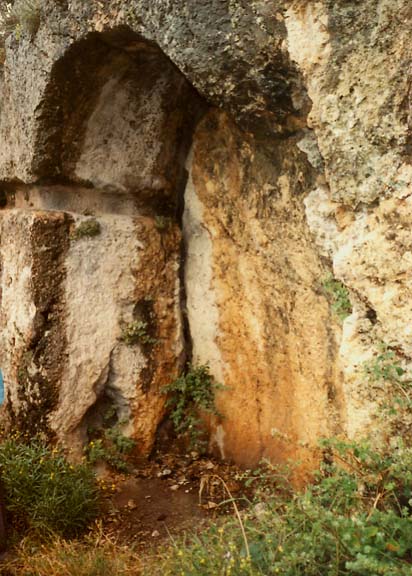
Saint Peter's Grotto, in which the apostle preached
Antakya or Antioch (Turkey), city in southern Turkey, capital of Hatay Province, on the Orontes River, near the Mediterranean Sea. The modern city is a trade and processing center for the adjacent agricultural plain. Citrus fruit and grapes are grown in abundance; other important crops are olives, melons, wheat, and cotton. Manufactured products include soap, silk and leather goods, and metal handicrafts.
The ancient city of Antioch was much larger than its modern counterpart. It was the capital of both the Seleucid dynasty in Syria and a province within the Roman Empire. The city was founded in 301 BC by Seleucus I, one of the generals and successors of Alexander the Great. Strategically located at the crossroads of important caravan routes, it soon became a center of commerce and a city of magnificent architecture rivaled only by Rome and Alexandria. When Syria was conquered by Rome in 64 BC, Antioch became the eastern capital of the Roman Empire. The Romans added to the architectural splendors of the city, building temples, palaces, and theaters, extending aqueducts, and paving main streets with marble.

church built within the grotto by Crusaders in the 12th and 13th centuries
Antioch was the center of Christendom outside Palestine. The apostles preached there before starting out on their missionary journeys, and in Antioch the term Christian, designating converts of Saint Paul, first came into use. In AD260 the city fell to the Persians. Over the next 13 centuries it was conquered by Arabs, Byzantines, Seljuk Turks, Frankish Crusaders, and Egyptians. The devastations of war and persistent earthquakes, including one in 526 that reportedly killed 250,000 people, reduced the once great city to relative unimportance. Antioch, known as Antakya in modern history, was captured by the Turks in 1516, and it remained a part of the Ottoman Empire until shortly after World War I (1914-1918), when it was granted to Syria under a French mandate. The province of Hatay, of which Antakya is the capital, became autonomous in 1938, and the following year it was ceded to Turkey.

from ancient Antioch
Although little of the ancient city remains, portions of the high walls that girded the city and of catacombs and aqueducts still stand. An archaeological museum houses a superbly preserved collection of mosaics dating from the 2nd and 3rd centuries. Nearby is Saint Peter's Grotto, in which the apostle preached; a church was built within the grotto by Crusaders in the 12th and 13th centuries. Population (1990) 123,871.Text from Microsoft Encarta
![]()
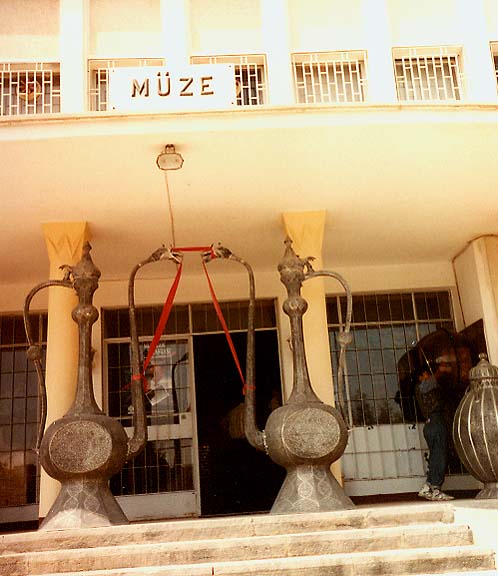
An archaeological museum houses a superbly preserved collection of mosaics dating from the 2nd and 3rd centuries.
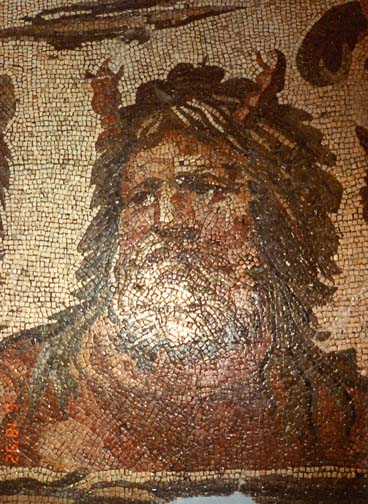
Most interesting exhibit is a
"Mosaic maker's catalog"
used to
show designs to potential buyers.
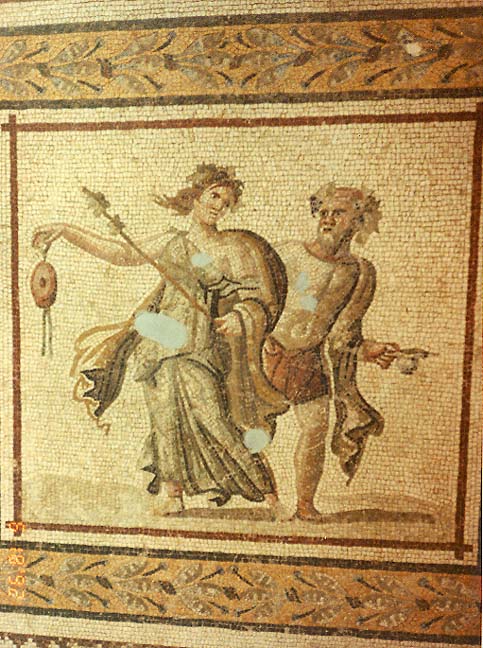
Mosaic makers move from Vila to Vila looking for business.
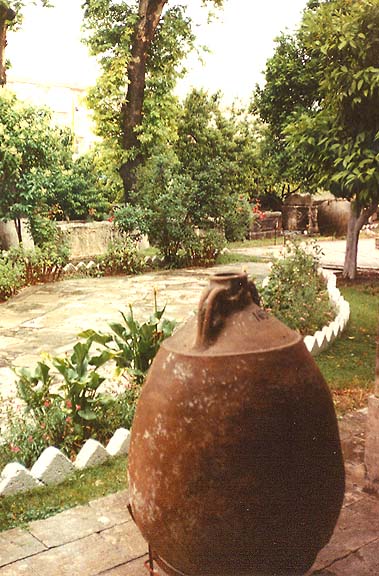
the museum garden
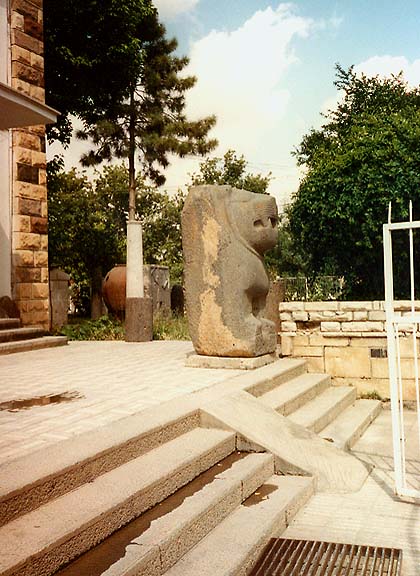
Neo-Hittite stone on museum steps

Neo-Hittite stone still at the quarry
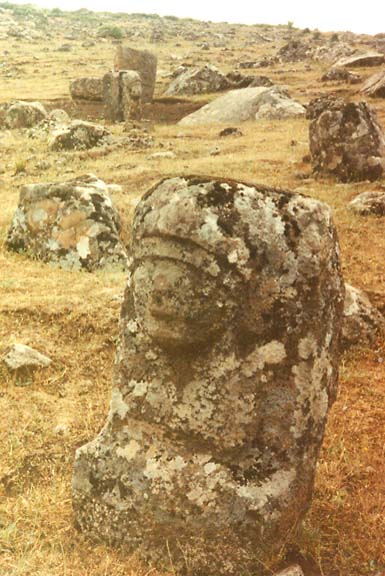
one in the field
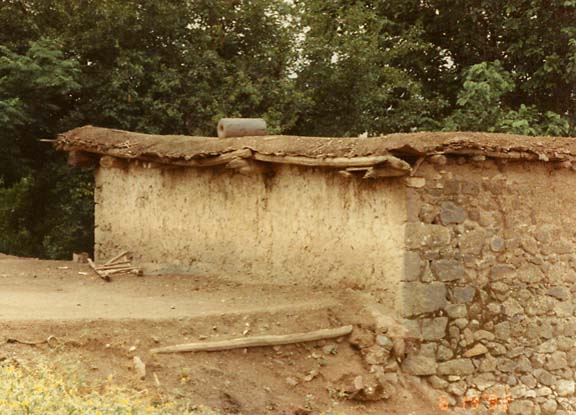
houses in this area often have mud
roofs
(note the stone roller on the roof, to compact the mud after a rain)
![]()
Return to Turkey in Europe page
![]()